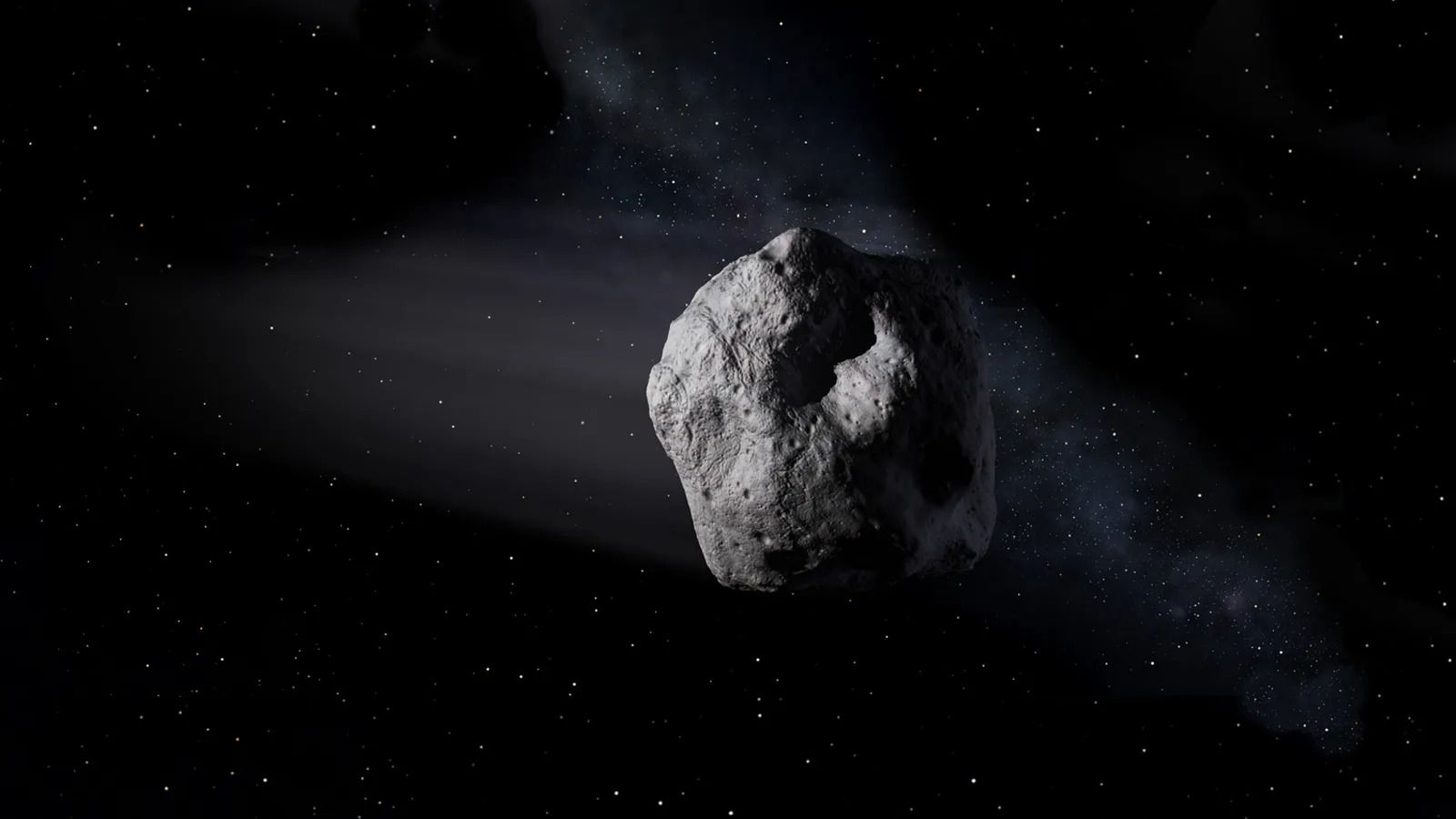Quick Links
Summary
- Although known as a near-Earth asteroid, 2024 YR4 is not an immediate threat—though investigations are still in their early stages.
- NASA estimates a small chance of impact in 2032, and various bodies are collaborating to determine the asteroid’s trajectory, size, and speed.
- The tried-and-tested DART technique and the use of a theoretical gravity tractor are just two ways that experts could protect us from potential celestial impacts in the future.
You may have heard about 2024 YR4, an asteroid that is hurtling towards Earth and might hit us in a few years’ time. As scary as that might sound, there’s no need to seek immediate cover or say goodbye to your loved ones. Things are probably going to be just fine.
What Is An Asteroid?
While meteoroids are small pieces of rock that cause meteors when they collide with Earth’s atmosphere, and comets are bodies of ice, dust, and rock that orbit the sun, asteroids are chunks of rock and/or metal, usually spanning anything from a few meters up to hundreds of kilometers across, believed to be planet formation debris.
Specifically, asteroid 2024 YR4 is a near-Earth asteroid estimated to be between 40 and 90 meters (130 to 300 feet) in diameter. When I say “near-Earth,” don’t worry—it’s not posing any danger to us… yet. This term simply means that its orbit brings it into Earth’s region in the Solar System.
The “2024” in its name reflects the year when it was first observed on two consecutive nights by the same observer, and “YR4” is a code that indicates the half-month of the discovery and the sequence within that half-month. In short, 2024 YR4 was discovered on December 27, 2024, by the Chilean station of the Asteroid Terrestrial-impact Last Alert System.
Will 2024 YR4 Hit Earth, and How Do We Know?
Within the first couple of months of its discovery, NASA scientists estimated that asteroid 2024 YR4 has between a 1.2% (the December 2024 estimation) and a 3.1% (the mid-February 2025 estimation) chance of impacting Earth on December 22, 2032.
Although those numbers seem small, 2024 YR4 is currently high on the European Space Agency’s and NASA’s risk lists. What’s more, since the asteroid’s collision likelihood is above the 1% impact probability threshold, US government agencies, the Space Mission Planning Advisory Group, the United Nations, and other bodies have received formal notification of its presence and potential hazard. That said, many asteroids in the past that initially caused concern were subsequently ruled out as scientists obtained more observations.
NASA has been working alongside the International Asteroid Warning Network, observing the asteroid’s trajectory and speed from ground-based telescopes until April 2025, when it will become too far away from Earth to observe. In March 2025, NASA’s James Webb Space Telescope will give us a more accurate idea of the asteroid’s size. After 2024 YR4 disappears from view, we won’t be able to see it again until around midway through the year 2028, when scientists will have a greater idea of whether it’s likely to impact.
Determining all the properties above will help scientists better assess not only whether 2024 YR4 is on course to hit Earth, but also, if it is, what extent of damage it could cause and whether we can prevent the collision altogether. As of early February 2025, NASA says that the asteroid is “large enough to cause localized damage”—in other words, planet Earth isn’t bracing itself for another Chicxulub impactor, the asteroid that wiped out the dinosaurs 66 million years ago, but it could still be catastrophic at and around the point of impact.
2024 YR4 is ranked as a 3 on the Torino scale, which measures the chances and potential consequences of an impact. A 0 represents no hazard, and 10 means a certain collision, and NASA defines level 3 as:
- A close encounter that merits astronomers’ attention,
- A 1% or greater chance of collision that could cause localized damage, and
- An event that merits public and public officials’ attention if the potential impact is within the next decade (which 2024 YR4 is).
NASA also adds that new observations often lead objects at level 3 to being re-assigned to Level 0.
Can We Prevent Asteroid Impacts?
In 2002, NASA carried out the first-ever mission exploring whether we could change an asteroid’s path by deflecting it through kinetic impact. Aptly called DART (Double Asteroid Redirection Test), the impactor spacecraft equipped with a camera and the ability to guide itself directly impacted a small asteroid, Dimorphos, shorting its orbital period around a larger, nearby asteroid by 32 minutes and 42 seconds.
Another theory proposed by space geeks is the use of a so-called “gravity tractor,” a spacecraft that orbits or hovers next to the asteroid and uses its gravitational pull to alter the asteroid’s trajectory over time. While this method would have the advantage of only needing small amounts of force to make slight adjustments, uncertainty about how the spacecraft’s exhaust could directly oppose its gravitational pull remains.
Events such as these serve as stark reminders that we’re far from alone in space—and naturally-existing objects aren’t the only things that accompany us. For example, as well as watching many meteor showers all year round, you can track the International Space Station as it flies overhead.





